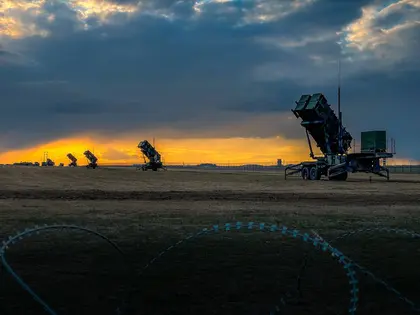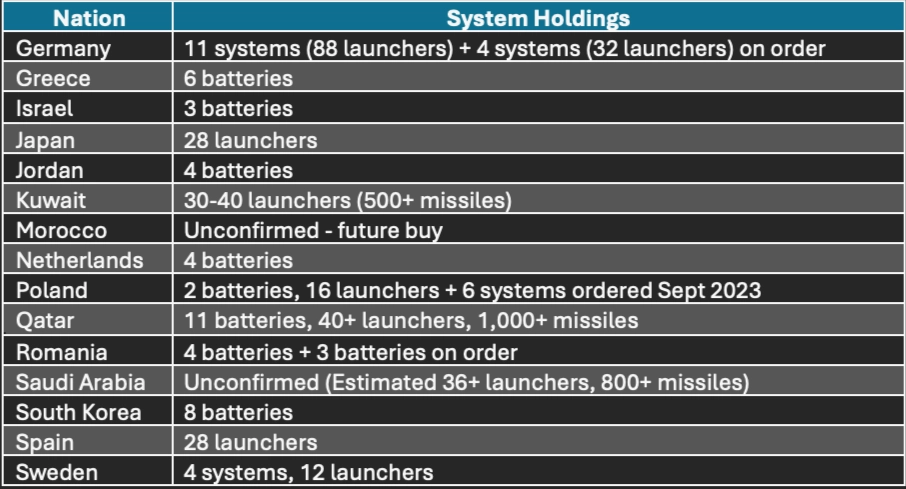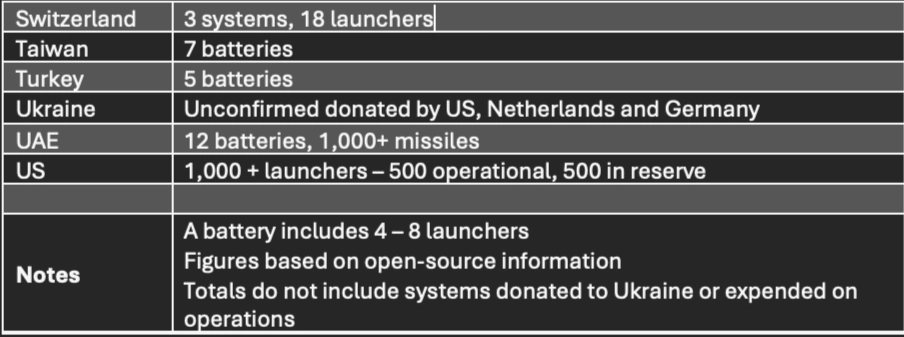The “Phased Array Tracking Radar to Intercept on Target” (PATRIOT) surface-to-air guided air and missile defense system was advertised as one of the best available, based on its test performances long before it was used “in anger.”
The first Patriots were deployed by US Forces in the mid-1980s and during the first Gulf War they performed well against the Iraqi Scud missile threat. Since then, the system – its radars, fire control systems and especially its missiles – has evolved, been modernized, and upgraded as the threat has similarly become technologically more advanced.
JOIN US ON TELEGRAM
Follow our coverage of the war on the @Kyivpost_official.
Even so, the performance of the “2020s” versions has surprised everyone and underlined their indispensability as the basis for a modern multi-tier air defense structure. It is not only in Ukraine that Patriot has proved itself.
In Saudi Arabia, it has succeeded in bringing down multiple ballistic missiles fired by Houthi rebels against oil and infrastructure facilities and has been used extensively in Israel against drone, missile and air attacks.
In Ukraine, the missile has been successfully used defensively, against all types of air attack including cruise, ballistic and even hypersonic missiles. It has also been used in an innovative semi-mobile aggressive role to take down key aviation assets such as the high-value A-50U “Mainstay” airborne early warning and control (AEW&C) aircraft.

EU Vows ‘Unwavering’ Support for Ukraine After Trump Win
The bottom line is Ukraine doesn’t have enough of either launchers or missiles to protect itself against the current levels of Russian missile attacks. On April 6 President Volodymyr Zelensky said that to fully protect Ukraine from Russian missile attacks 25 Patriot systems, each consisting of 6-8 missile batteries, were needed.
On Wednesday, April 10, Ukraine’s Foreign Minister, Dmytro Kuleba said that he and his team had identified 100 Patriot systems being held worldwide. He said that some neighboring countries were using more than one complete system to guard a single airport. This was a follow-up to similar comments he had made while attending NATO’s 75th anniversary celebrations on April 3.
System Description
Patriot has four operational functions: communications, command and control, radar surveillance and interceptor missile guidance.
Each battery consists of six major components: power plant, radar set, engagement control station, launchers, antenna mast group, and the interceptor missiles themselves.
- The phased array radar set is resistant to jamming to provide detection and tracking of targets, fire control and helps guide interceptors to their targets.
- The manned engagement control station calculates trajectories for interceptors, controls the launching sequence and provides a communication link between launchers and other batteries.
- The launchers transport and protect the interceptor missiles and act as the missile launch platform.
- The antenna mast group is the communications backbone for the Patriot unit.
- There are two main missile types: the proximity-fused PAC-2 and the PAC-3 “hittile,” designed to intercept and destroy missiles by impacting them.
Who has Patriots?
Raytheon, that US defense contractor that designed and built the system, says it has delivered more than 240 Patriot fire units to 19 nations, while Lockheed Martin, the other US defense giant, has manufactured more than 10,000 missiles. By all accounts, the war in Ukraine is resulting in both corporations ramping up their manufacturing capability, not just to feed Ukraine’s needs but to address the interest the success of Patriot has sparked worldwide.
Persuading any nation which hasn’t already done so to voluntarily give up its Patriot missiles may be a challenge, but there is a potential solution.
As a result of the ongoing war in Ukraine and at the urging of the US government, both Raytheon and Lockheed Martin have increased their build capacity, as have component manufacturers such as Boeing, according to Defense News.
Raytheon is now able to produce 12 complete systems a year while Lockheed is already churning out 500 of the latest PAC-3 missiles annually with a target to get to 650 by 2027.
Some of its 2024 production has already been earmarked to replace US Patriots previously provided to Ukraine and this could be an option to any nation ready to transfer their own stocks. The attraction would be “new for old,” which has been the basis for many of the equipment donations previously made to Ukraine during the two years of the ongoing war.
With the European Parliament applying pressure on European holders of the systems to release Patriots by blocking the EU Council Budget, there are several users who don’t currently face an imminent threat, who might be better placed to ante-up. The key to achieving this would be finding the best combination of “carrot and stick” to encourage release of the Patriots.
The bottom line is that, as always, the best way forward will rely on the release of the funds currently blocked by the US Congress, although Ukraine’s Foreign Minister, Dmitry Kuleba, has indicated that if the weapons became available Ukraine would find the funding needed to hire systems if not buy them.
You can also highlight the text and press Ctrl + Enter








